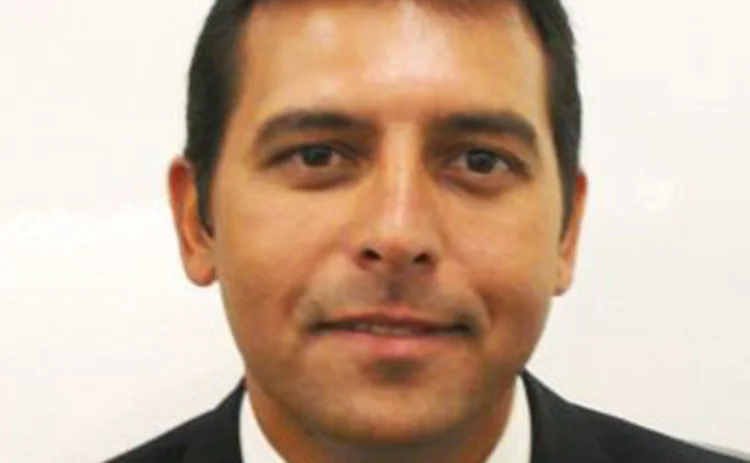As Clientele Grow, LatAm Wealth Managers See Tech Chasing Behind

The study queried 30 firms in North America, seven in Brazil and three in Mexico. Overall, the two sets of firms are working on the same set of priorities, only with the Latin American further back on the curve. "In general, the market is at a different stage of evolution. Though Latin American firms have been traditionally limited by the market's size, socioeconomic change the region is experiencing represents a significant opportunity for wealth managers," says Marcelo Fava, a partner with Ernst & Young who co-penned the survey.
New Segments
Specifically, Fava notes, that means more high- and ultra-high net-worth clients, but a still greater jump in mass market and core affluence business after seven years of uninterrupted economic growth. "What's changed is the difference of client segments, and greater targeting with customized products and services. Unlike in the past, these are now equal in Latin America today to those in the US and Europe," he says.
Those services fall into three types: transactional, fee-based advisory for multi-asset class investment, and lending and credit. Fava says technologies tackling the middle category are primed for far greater attention, as reflected in the survey's comparative responses around the origin of wealth managers' applications.
Latin American portfolio management, cash management, and, to a slightly lesser extent, trade order management and accounting, are developed in-house far more frequently than in North America, where there is a far more distributed spread across software packages, application service providers (ASPs), and outsourcing offerings.
"Even firms that are part of larger global institutions face challenges [of economic feasibility and location requirements]," Fava continues. "They struggle to develop strong business cases that warrant the deployment of global solutions in to their markets.
"Fee-based offerings are not as popular yet in the region, and on both a business and technology level, we believe that's an area of tremendous opportunity," he says. "Obviously, there are tools in the US and Europe already to help wealth managers construct those more complex portfolios, reduce total cost of ownership, and provide more scale. Wealth management is a face-to-face business, so above all, the technology can advantage advisors as they're out there, looking to demonstrate value-add to new clients."
You see global financial institutions diversifying their book of business, while others like Bär—a true industry player that basically built private banking—all trying to enter the region. Once the products are there, the platforms have to follow.
Energy
Acquisition activity in the region signals a strong future, as well. Bank of America's sale of its wealth management business last year to Julius Bär, and Chile's Grupo Security buying up Grupo Angelini's Cruz del Sur are two varied examples, with the stable political environments in Uruguay and Colombia, and stronger Mexican financial infrastructure and proximity to the US, also proving attractive. "You see global financial institutions diversifying their book of business, while others like Bär—a true industry player that basically built private banking—all trying to enter the region. Once the products are there, the platforms have to follow," Fava says.
Out of that, Fava anticipates more dedicated IT capacity for wealth management, too. The survey found, for example, that a full two-thirds of Latin American managers work with pooled technology resources—e.g., shared among retail, insurance, or institutional asset managers—while 11 percent have dedicated personnel, with remainder using a hybrid structure. In North America, by contrast, the pooled model is more than halved, at 32 percent, with hybrid taking 44 percent, and dedicated teams 24 percent. The gaps will eventually narrow.
"That will take longer to materialize than software offerings," he says. “But around 90 percent of firms we talked to are planning to expand advisory headcount in the next few years. There is a lot of energy around this."
Bottom Line
- Latin American wealth managers remain behind their North American counterparts in their implementation of externally provided applications. That is in part due to their limited scale, which is slowly falling away, but vendors can also do better to provide value-add at cost, particularly in fee-based portfolio management.
- Wealth managers' IT support in the region is also far more likely to be built into a shared services, rather than dedicated or hybrid model. However, acquisition activity and new entrants in the space should eventually spur change in that space, as well.
Only users who have a paid subscription or are part of a corporate subscription are able to print or copy content.
To access these options, along with all other subscription benefits, please contact info@waterstechnology.com or view our subscription options here: https://subscriptions.waterstechnology.com/subscribe
You are currently unable to print this content. Please contact info@waterstechnology.com to find out more.
You are currently unable to copy this content. Please contact info@waterstechnology.com to find out more.
Copyright Infopro Digital Limited. All rights reserved.
As outlined in our terms and conditions, https://www.infopro-digital.com/terms-and-conditions/subscriptions/ (point 2.4), printing is limited to a single copy.
If you would like to purchase additional rights please email info@waterstechnology.com
Copyright Infopro Digital Limited. All rights reserved.
You may share this content using our article tools. As outlined in our terms and conditions, https://www.infopro-digital.com/terms-and-conditions/subscriptions/ (clause 2.4), an Authorised User may only make one copy of the materials for their own personal use. You must also comply with the restrictions in clause 2.5.
If you would like to purchase additional rights please email info@waterstechnology.com
More on Trading Tech
Will overnight trading in equity markets expand next year? It’s complicated.
The potential for expanded overnight trading in US equity markets sparked debate this year, whether people liked it or not.
WatersTechnology latest edition
Check out our latest edition, plus more than 13 years of our best content.
The total portfolio approach gains momentum: Building the right tech foundation for success
The rationale for the TPA, and the crucial role technology plays in enabling such an approach
Google, CME say they’ve proved cloud can support HFT—now what?
After demonstrating in September that ultra-low-latency trading can be facilitated in the cloud, the exchange and tech giant are hoping to see barriers to entry come down.
Institutional priorities in multi-asset investing
Private markets, broader exposures and the race for integration
BlackRock and AccessFintech partner, LSEG collabs with OpenAI, Apex launches Pisces service, and more
The Waters Cooler: CJC launches MDC service, Centreon secures Sixth Street investment, UK bond CT update, and more in this week’s news roundup.
TCB Data-Broadhead pairing highlights challenges of market data management
Waters Wrap: The vendors are hoping that blending TCB’s reporting infrastructure with Broadhead’s DLT-backed digital contract and auditing engine will be the cure for data rights management.
Robeco tests credit tool built in Bloomberg’s Python platform
This follows the asset manager’s participation in Bloomberg’s Code Crunch hackathon in Singapore, alongside other firms including LGT Investment Bank and university students.







